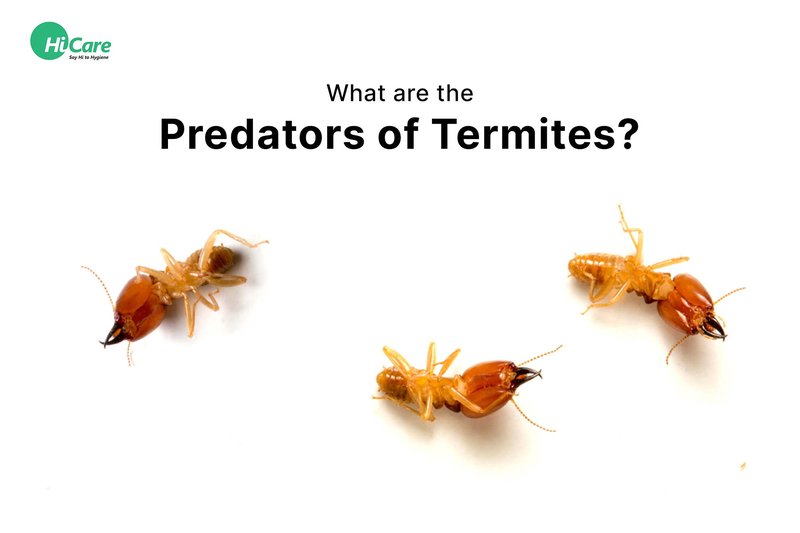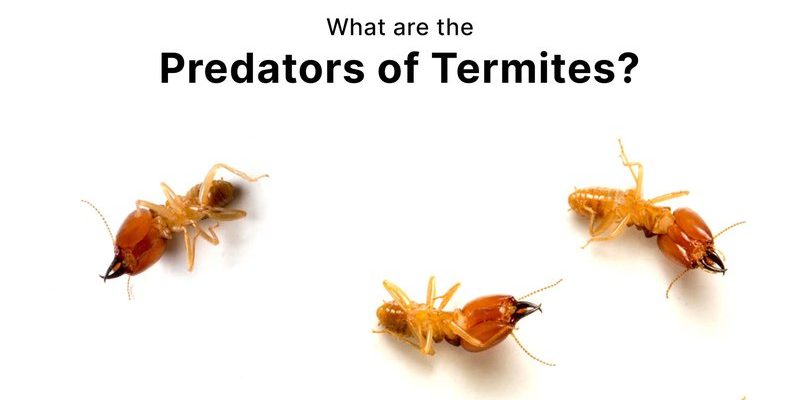
So, what are these predators and threats that make a termite’s life so challenging? They range from hungry birds to specialized parasites, each playing their part in keeping termite populations in check. Let’s dive into the fascinating world of termite threats and examine how these little critters are constantly fighting for survival.
Birds: The Aerial Assassins
One of the primary predators of termites is birds. Although you might think, “How can a tiny insect like a termite compete with a bird?” the reality is that many birds have evolved to be skilled hunters of these wood-loving insects. For instance, woodpeckers are particularly adept at seeking out termite colonies hidden in trees.
Birds like the black-capped chickadee and the sparrow also join the fray. When they spot a termite mound or a colony, they swoop down and pick off unsuspecting workers, turning what was a bustling colony into a scene of chaos in seconds. They can consume dozens of termites in one sitting, making them significant threats.
Here’s the thing: birds are not just opportunistic eaters. Their hunting techniques showcase incredible intelligence and adaptability. They often listen for those tell-tale sounds of a termite colony working away and zero in on their target with precision.
Ants: Nature’s Fierce Competitors
Most people think ants are just pesky little creatures that invade picnics, but believe it or not, they are also among the top predators of termites. Imagine a colony of ants discovering a termite mound. It’s like a highly coordinated military operation, where they work together to attack the termite fortress.
Certain ant species, like the Formica and Camponotus, have developed a taste for termites. They tend to invade termite mounds, launching an all-out assault. Once inside, they use their strong jaws to capture termites, sometimes even dragging them back to their nests. This can wipe out entire colonies if left unchecked!
What’s fascinating is the way ants communicate and strategize. They send out pheromones to alert other ants of their success, bringing reinforcements into the fray. This organized behavior makes them incredibly effective predators.
Parasites: The Stealthy Threats
Think about how sneaky some creatures can be. Parasites often go unnoticed, slipping into termite colonies and wreaking havoc from the inside out. These parasites include worms and even certain fungal pathogens that specifically target termites.
For example, the Metarhizium anisopliae fungus infects termites and causes them to become ill. Once infected, a termite might wander away from its colony, becoming a host for the fungus to grow and spread. This causes the colony’s population to dwindle, affecting its ability to function and thrive.
Parasites can be devastating because they don’t just kill individual termites; they can destabilize entire colonies. That’s like a well-oiled machine suddenly losing a few gears, causing it to sputter and fail.
Other Insect Predators: Beetles and Wasps
Just when you thought the list of termite predators couldn’t get any longer, enter beetles and wasps! Certain beetles, such as the Termitophile beetle, have evolved to live among termites. They not only feast on termites but also compete for resources within the colony.
Wasps, especially those from the family Aphidiidae, are also notorious for laying their eggs inside termites. The larvae hatch and feed on the termite host, effectively using it as a live food source. This kind of parasitism is like an invasion from within, making it hard for the termite colony to recover.
These insect predators showcase nature’s relentless cycle of life and death. Each species plays a role in keeping the balance of the ecosystem, even if it means taking a toll on termite populations.
Environmental Threats: Climate Change and Habitat Loss
Aside from their immediate predators, termites face significant environmental threats as well. Climate change alters their habitats, affecting their food sources and overall survival. Rising temperatures can lead to droughts, which may reduce the amount of wood available for feeding.
Habitat loss due to human activities is another major concern. Urban development often leads to the destruction of natural habitats, which pushes termite populations into smaller areas, increasing competition for resources. Imagine them being squeezed into a corner, fighting harder for necessities like food and shelter.
These environmental changes not only threaten individual colonies but can also disrupt entire ecosystems in which termites play a critical role, such as decomposing dead plant material and returning nutrients to the soil.
Human Intervention: Pesticides and Control Measures
In our quest to manage termite populations (especially when they invade our homes), humans have turned to various pest control methods. While these efforts can be effective, they pose a significant threat to termites.
Pesticides designed to eliminate termites can decimate entire colonies when systematically applied in infested areas. The use of chemical treatments may seem like a straightforward solution, but it can disrupt the balance of local ecosystems and harm beneficial insects as well.
You might be wondering about eco-friendly alternatives. There are some natural pest control methods, such as using nematodes (microscopic worms) that target termites. They work by infecting and killing pest insects but are safer for the environment. However, these solutions may take longer to implement than chemical treatments, and their effectiveness can vary.
Competition from Other Wood-Eating Insects
Termites aren’t the only insects with a fondness for wood. Other species, like carpenter ants and powderpost beetles, create fierce competition for the same resources. This competition can lead to conflicts over food sources, particularly in areas with limited wood availability.
Carpenter ants, for example, create their nests in wood and can compete directly with termites for both nesting sites and food. The presence of these wood-eating insects creates an additional challenge for termites trying to establish and maintain their colonies.
This dynamic can significantly impact the success of termite populations. Imagine being part of a race where not only are you trying to survive, but you have several fast competitors right behind you—it’s a true struggle.
In nature, every creature plays its part in the circle of life, and for termites, that means constantly facing predators, parasites, environmental changes, and human interventions. Their natural enemies, from birds to ants to various environmental threats, keep their populations in check.
Understanding these threats sheds light on the intricate balance of our ecosystems. Termites, despite their unassuming appearance, are more than just pests; they’re vital players in the environment. By recognizing the challenges they face, we can appreciate the fine line that exists in nature between survival and extinction. After all, every little creature, big or small, has a role to play, don’t they?

